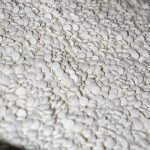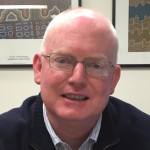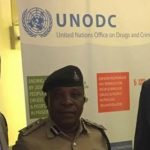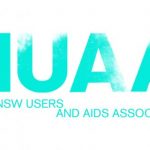Stop Murdering Drug Users: An Interview with Harm Reduction Advocate Pascal Tanguay
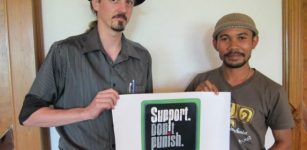
At 8pm on Thursday night, Catholic leaders across the Philippines rang their church bells simultaneously for five minutes to honour those who have died during president Rodrigo Duterte’s “reign of terror.”
The ritual will take place for the next 40 days and is a call for the bloodshed to stop.
The Philippine president won last year’s election on a harsh law-and-order platform. He launched a war on drugs upon the nation’s citizens during his inauguration speech on June 30 last year.
Today, government figures suggest that close to 3,500 people have been killed by police for alleged drug-related offences. Police claim they’ve only shot suspects in self-defence, but most disagree.
The president’s call to kill addicts has played into the hands of those with vendettas, facilitating thousands of extrajudicial killings at the hands of vigilantes.
Kira Miranda, spokesperson for the human rights group Katungod-Sinirangan Bisayas, said in late August that the drug war has claimed the lives of more than 13,000 civilians, as a result of Philippine national police operations, coupled with the “tolerated” actions of vigilante groups.
The Thai war on drugs
However, this isn’t the first time a head of state in Southeast Asia has taken such a ruthless approach to dealing with illicit substances. In February 2003, then-Thai prime minister Thaksin Shinawatra launched a drug war in his country.
The campaign took a similar zero-tolerance approach with the aim of making Thailand drug-free.
Police were given arrest quotas and the most brutal outcome of the policy was that around 2,300 extrajudicial killings were carried out within the first three months.
In 2007, an official investigation found that more than half those killed during the police operations had no connection whatsoever to illegal drugs. And HIV prevention and treatment programs were compromised as people who inject drugs were driven underground for fear of arrest.
While the Thai government has released national drug strategies every few years, the country has continued to implement punitive practices.
In September 2014, a joint task force of police and army personnel in Bangkok were sent out to conduct door-to-door urine tests. In a two-hour period, 83 drug users were detected, all of whom were deemed addicts and sent to compulsory treatment centres.
A different approach
The Law Enforcement and HIV Network (LEAHN) works to connect law enforcement agencies and the public health sector with the aim of preventing the spread of HIV. The organisation works closely with at risk populations, such as people who inject drugs, sex workers and men who have sex with men.
Pascal Tanguay is the deputy director of LEAHN. He’s been working in the Southeast Asian harm reduction sector since 2004. He began working with LEAHN after he recognised the need “to bridge the relationship between civil society organisations and police in the context of harm reduction.”
Sydney Criminal Lawyers® spoke with Mr Tanguay, who’s based in Thailand, about the Thai government’s approach to drug control and harm reduction, global developments in drug law reform and the tragedy that’s unfolding in the Philippines.
Yaba is the popular illicit drug of choice in Thailand. The pills – which are produced in Myanmar – are relatively cheap and are a concoction of methamphetamine and caffeine.
What’s the situation like in Thailand today, in regards to the use of yaba?
In Thailand, yaba is the most popular drug. 2012 data shows 80 percent of people who entered drug treatment their use was related to amphetamine-type stimulants, particularly methamphetamine. It’s very popular. It’s high-quality. It’s quite cheap.
There’s three profiles of users in Thailand. You’ve got people who use the drug to enhance their performance at work or their study, or just as a recreational activity.
We also have the people who inject drugs. The traditional opiate injectors, who have been using heroin. These people are switching over from using heroin to injecting crystal meth, in particular, mixed in with pharmaceuticals. This recreates the high similar to injecting heroin, so I’m told by the clients of the organisation I represent in Thailand.
And the third group are young people, men who have sex with men, and transgender people, who are using the drug to enhance their sexual and social experiences during parties, and on the club scene.
In the middle of the 1990s, there was a global methamphetamine epidemic and Thailand was particularly affected. And in reaction, the Thai government criminalised all amphetamine-based products, including products that had previously been approved for medical treatment, like Ritalin, which is an amphetamine derivative. So that’s a significant impact on public health.
But meanwhile, the response for treatment or prevention of drug use, of particularly amphetamine use, has not been successful in generating the expected results from the policy instruments that have been deployed by the government.
Kratom is the leaf of a plant that has been traditionally chewed in Thailand for its mild stimulant effects. Today, it’s a prohibited drug.
In 2013, Thai public health minister Pradit Sintavanarong was calling for it to be decriminalised, as it could potentially help people with methamphetamine dependency. This was part of a broader push to decriminalise the plant.
Why was a plant with only a mild psychoactive effect banned in the first place? And what is the current situation with kratom today?
The reason why kratom was criminalised in the first place dates back to the time when opium was still legal in Thailand. During the time, when opium was legal, the government took huge taxes from the sales.
People were starting to use kratom to wean themselves off their dependence on opium. So, seeing a rift to their revenue stream, the government criminalised kratom to prevent drug users from breaking their dependence.
Over the past couple of years, there’s been several attempts to decriminalise kratom. Earlier this year, the ex-minister of justice suggested decriminalising kratom with other drugs. And it’s being piloted.
There were some legislative changes in April and May that have decriminalised hemp and kratom in 16 provinces, as a pilot project to see the impact that it would have on the local economy and community.
So, it was hemp, along with kratom?
Yes. Hemp and kratom. Thai legislation distinguishes very clearly between hemp and marijuana. They’ve now decriminalised hemp with very low THC content to support the local industry, especially for textiles.
Over recent years in Australia, there’s been a big outcry from health experts for pill testing services to be available at music festivals.
Australia has a long history of applying harm reduction methods. In the mid-80s needle and syringe programs were rolled out across the country in response to the AIDS crisis. And in the early 2000s, the first safe injecting facility in the English-speaking world was opened in Sydney’s Kings Cross.
What is the government approach to harm reduction like in Thailand? And what sort of programs designed to reduce the harms associated with drugs have been implemented there?
The Thai government has had a pretty difficult relationship with harm reduction. They started supporting it more officially in 2010. There was a draft national policy that wasn’t fully implemented.
Then in 2014, a new policy was passed. And again in 2017, a new policy was drafted with a proposal for a wider range of comprehensive services to address the needs of people who inject drugs and to prevent HIV transmission.
However, the coverage of services is very low. We have access to only methadone for substitution therapy. There are no alternatives. Access to naloxone to prevent overdose is extremely limited. Needle and syringe programs are operated only by civil society organisations in a handful of provinces. So again, coverage is very low.
And even the data that’s being used as targets for programming and achieving government objectives, doesn’t actually reflect the situation on the ground.
So, there’s important gaps in how the government has been addressing harm reduction in Thailand. And that’s not surprising given their approach which has focused more on repression and prohibition, rather than public health and evidence-based solutions to these social issues.
In 2002, the Thai government passed the Narcotics Rehabilitation Act. This meant that a person who commits a minor drug infringement is now sent to a drug treatment centre, rather than a prison.
On face value, this sounds like a beneficial system. However, this government approach has long been criticised. Can you explain why?
The 2002 policy was supposed to change how drug use was going to be perceived by society. Changing from a criminalisation model to a public health model, where people were going to be perceived and treated as patients.
In practice, the implementation of the policy has translated in the establishment and the massive scale up of compulsory detention in the name of treatment.
So, hundreds of thousands of people are herded into so-called drug treatment centres that are essentially managed by law enforcement agencies with very little public health training or skills to implement drug dependence treatment programs.
Hence, why this approach has been criticised by UN agencies, civil society organisations and human rights organisations across the world.
So now to the tragic situation in the Philippines. It’s been reported that the number of deaths attributed to the drug war is as high as 13,000.
You’ve lived in the region for over a decade. In your opinion, how can this man get away with carrying out this mass slaughter? And why has it been allowed to continue?
In my experience of the region, it’s not really surprising. If you recall in 2003, there was a bloody war on drugs in Thailand, where about 2,300 people were extrajudicially executed by law enforcement. And there’s been very little justice, or restorative justice, following these bloody events.
In Southeast Asia, law enforcement is extremely militarised. Governments do not necessarily embrace democratic ideals, like European governments do. And there’s a tradition of repression against drugs, where they are often used as a rallying platform for politicians to be elected through popular vote.
So, in that respect, I’m not surprised to see the situation in the Philippines, given the historical context of Southeast Asia. The war on drugs approach pleases multiple governments in this region.
The situation in the Philippines has also had a trickle-down effect encouraging Indonesia and Cambodia to also reinitiate or scale up their war on drugs at home.
You mentioned the situation that occurred in Thailand in 2003, where around 2,300 people were killed. What was the reaction of the Thai people to this situation?
In Thailand, during the war on drugs, the prime minister at the time Thaksin Shinawatra enjoyed over 90 percent popularity. It’s very similar to the popularity that president Duterte in the Philippines enjoys following his war on drugs.
That said, after a certain period of time, people started seeing through some of the rhetoric. But despite that, there was still an overwhelming majority of Thais that supported the war on drugs approach.
There was a poll conducted by the Bangkok Post that noted more than 70 percent of Thais were in favour of seeing more crackdowns, more urine testing, more seizures, more arrests and more incarceration of people who use drugs to solve the problem.
Countries in Southeast Asia take a notoriously punitive approach to illicit substances. In many cases, the death penalty can be applied.
However, this wasn’t always the case. And the reason why these nations did take this approach was in part due to international pressure, especially from the United States.
Today, one in five US citizens lives in a jurisdiction where they can legally smoke recreational marijuana. And in 29 US states medicinal cannabis is legal.
What do you think about this situation where a nation like the US is relaxing some of its drug laws, while at the same time, it’s responsible for some of the most prohibitive laws that are still in place around the globe?
It’s overwhelmingly positive that the US is starting to change its approach to drug control, and adopt more evidence-based strategies to deal with those sorts of issues.
I’m hoping that such a shift in the US will also have a positive trickle-down effect on other countries that have pegged their policies largely based on US policies. I’m hoping that this shift in the US to a more public health, or balanced approach to drug control will also influence drug control practices in Southeast Asia.
On July 6 2015, Thai justice minister General Paiboon Khumchaya declared the nation’s drug war a failure. He said the goal of eradicating drugs was counterproductive and that heavy-handed law enforcement had led to police corruption and overcrowded prisons, filled with the nation’s poor.
Was this just rhetoric or has there been changes in the Thai government’s approach to illicit drug use in recent years?
The situation has changed significantly with the passing of the king in Thailand. And what was on the agenda for drug policy reform has sadly been delayed because of the political situation.
I don’t think it’s completely off the table. But, it will be a wait and see game to better access whether changes will materialise or not.
There’s been some small changes, as I said before, the decriminalisation of hemp and kratom in 16 pilot provinces. There has been the passage of the national harm reduction policy. And the national model to dealing with drug treatment is under assessment and review.
There are potential changes in the pipeline and we will have to wait and see to assess how these results materialise.
So due to political changes, drug law reform and harm reduction have been put on the backburner?
Certainly, the thrust for policy change has subsided. We will have to see a new leader come along and revise the push forward. But, I’m not so confident that we can expect major changes in the short-term.
And lastly, the drug war has been declared a failure on multiple occasions. It’s been shown to have led to increased drug consumption, the growth of powerful crime networks and contributed to mass incarceration.
The attitude of many towards drug prohibition is changing, even those of high up law enforcement officials.
In your opinion, Pascal, what’s the next step from here? Are we actually going to see an end to drug prohibition?
Compared to when I started working in this feed 13 years ago, there’s been tremendous change. There’s been more and more support from media agencies, international development agencies and government agencies that are all increasingly realising the need to reform drug control policies and practices.
It is certainly encouraging.
There are a number of major thrusts we can see across the world. There’s been a thrust for decriminalisation. And a thrust for public health and harm reduction. There are many opportunities of seeing a thrust to recreational cannabis.
There are a lot of opportunities for how the drug control sector might evolve in the future.
Specifically, Southeast Asian governments are struggling to take the public health approach. I’m hoping that in the next five to ten years, we’ll see more integration of those policies and practices in national drug control mechanisms across the region.
Pascal, thanks very much for taking the time out to have this chat with us today.
My pleasure.


